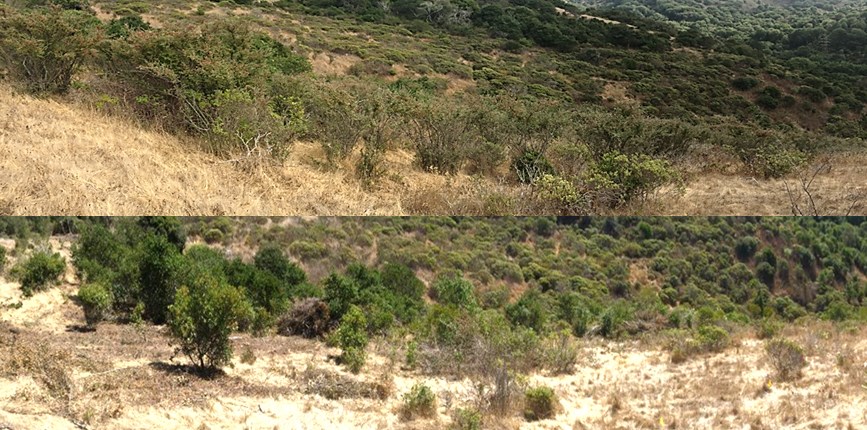Last updated: October 31, 2017
Article
Cotoneaster Removal Helps Restore Important Wildlife Habitats
October 2017 - National Park Service and Golden Gate National Parks Conservancy staff are working on cotoneaster removal at several project sites in the Golden Gate National Recreation Area including Oakwood Valley and Tennessee Valley.
Cotoneaster—an invasive woody shrub with red berries that are readily dispersed by birds—forms dense stands that block all light to the understory. It can effectively outcompete native vegetation in all plant communities, including oak bay woodland, coastal scrub, and in the open grasslands where mission blue butterflies (Icaricia icariodes missionensis) are found.

Golden Gate National Parks Conservancy
So far, 12.5 acres of cotoneaster have been removed from coastal grasslands supporting mission blue butterfly habitat at Oakwood Valley, and about 1.9 acres were cleared from Tennessee Valley near Coyote Ridge and along Old Springs and Marincello trails. Over 95% of cotoneaster (1.6 acres) has also been removed from coastal grasslands supporting mission blue butterfly habitat Milagra Ridge.
Contact Christina Crooker for more details.
